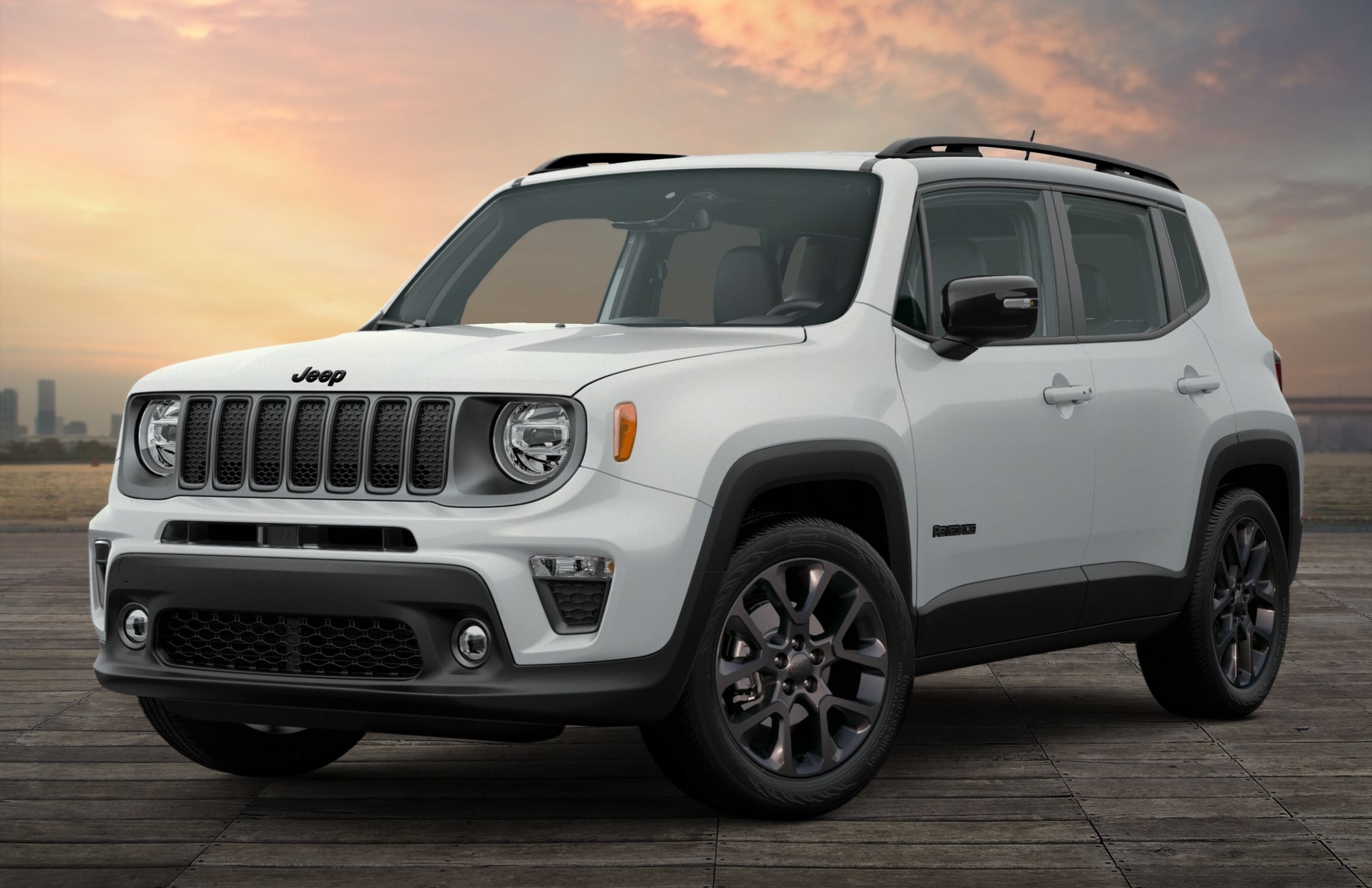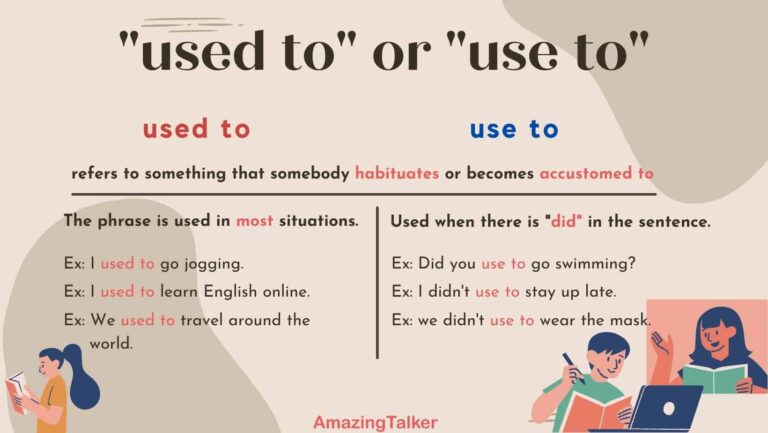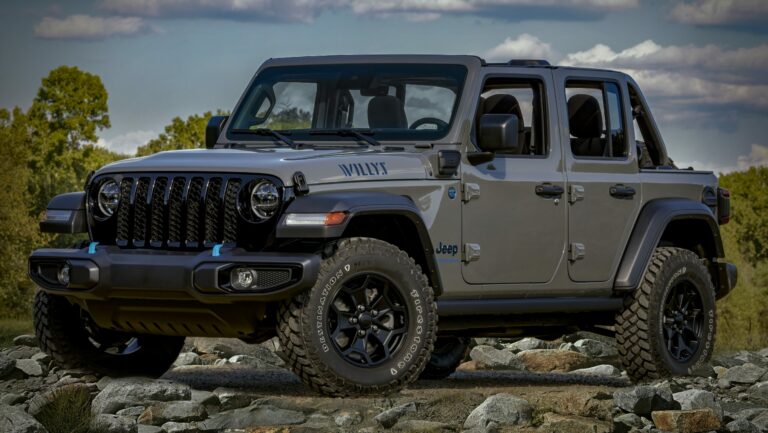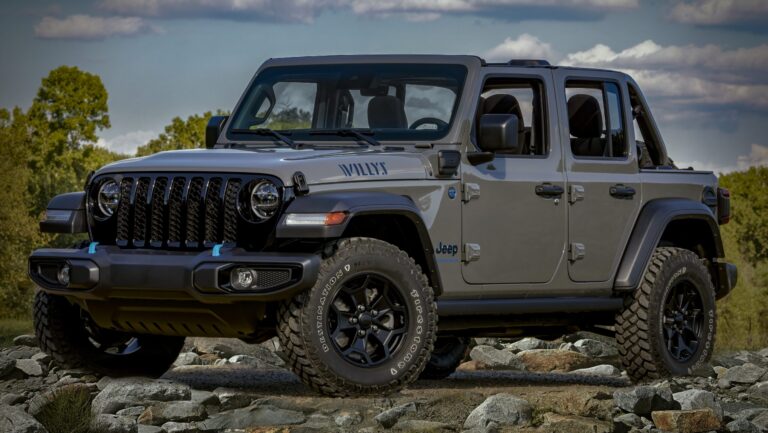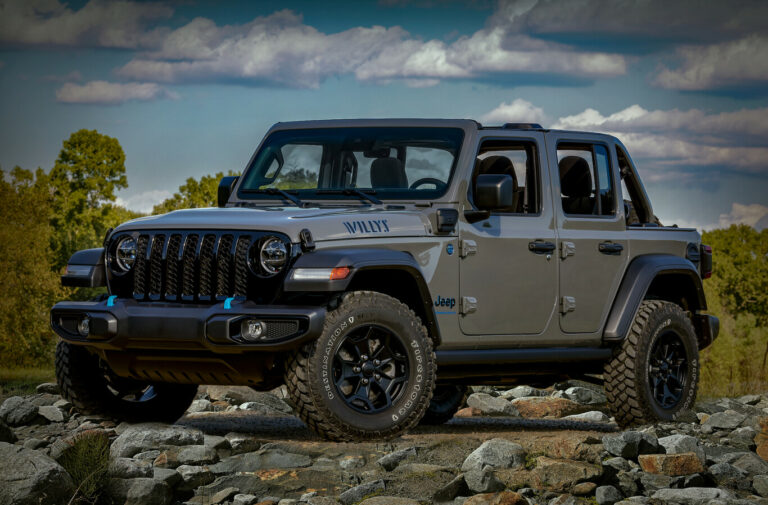Jeep JK Wheels And Tires For Sale: Your Ultimate Buying Guide
Jeep JK Wheels And Tires For Sale: Your Ultimate Buying Guide jeeps.truckstrend.com
The Jeep Wrangler JK (2007-2018) stands as a beacon of off-road capability and customizable charm. For many JK owners, the journey of personalization often begins, or significantly evolves, with the wheels and tires. Far more than mere functional components, the right set of wheels and tires can dramatically transform your JK’s appearance, enhance its off-road prowess, and fine-tune its on-road handling. This comprehensive guide, "Jeep JK Wheels And Tires For Sale," is designed to equip you with all the knowledge needed to make an informed decision, whether you’re upgrading for performance, replacing worn-out stock components, or simply aiming for that perfect aesthetic. Dive in to discover how to navigate the vast market of JK wheel and tire options and find the perfect match for your adventure machine.
Why Upgrade Your JK’s Wheels and Tires?
Jeep JK Wheels And Tires For Sale: Your Ultimate Buying Guide
Upgrading your Jeep JK’s wheels and tires isn’t just about making it look tougher; it’s a strategic move that impacts multiple aspects of your vehicle’s performance and utility.
- Enhanced Off-Road Capability: Larger diameter tires with aggressive tread patterns (like Mud-Terrains or Hybrid-Terrains) provide increased ground clearance, better traction on challenging terrains (mud, rocks, sand), and improved articulation. Coupled with wheels designed for off-road durability, your JK becomes an even more formidable trail machine.
- Improved Aesthetics and Stance: Aftermarket wheels come in a vast array of designs, finishes, and sizes, allowing you to personalize your JK’s look dramatically. A wider stance, achieved through proper wheel backspacing, can give your Jeep a more aggressive and capable appearance, truly setting it apart from the crowd.
- Optimized On-Road Handling: While often associated with off-roading, the right tire choice can also improve on-road manners. All-Terrain tires, for instance, offer a good balance of off-road grip and quiet, comfortable highway driving. Lighter wheels can also reduce unsprung weight, potentially improving ride quality and handling responsiveness.
- Durability and Performance: Stock wheels and tires are designed for general use. Aftermarket options are often built with stronger materials and more robust designs, better suited to withstand the rigors of serious off-roading. Tires specifically engineered for performance can offer superior grip, longer tread life in specific conditions, or enhanced puncture resistance.
Understanding JK Wheel Specifications

Before you start browsing, it’s crucial to understand the key specifications that define a Jeep JK wheel. Getting these wrong can lead to fitment issues, rubbing, or even unsafe driving conditions.
- Bolt Pattern (5×5 or 5x127mm): This is non-negotiable. The JK Wrangler uses a 5-lug pattern with a 5-inch (or 127mm) spacing between opposite studs. Any wheel you consider must have this bolt pattern.
- Diameter (16", 17", 18", 20"): This refers to the rim’s diameter. Common sizes for JK range from 16-inch to 20-inch. Smaller diameters (16-17 inches) typically allow for more tire sidewall, which is beneficial for airing down on trails and absorbing impacts. Larger diameters (18-20 inches) can accommodate larger brakes and offer a more "street" or "show" look, but often come with less sidewall, making them less ideal for serious off-roading.
- Width (7", 8", 9", etc.): This is the measurement of the rim from bead seat to bead seat. The wheel width must be appropriate for the tire width you plan to mount. Most tire manufacturers specify a recommended wheel width range for their tires.
- Backspacing and Offset: These are arguably the most critical specifications for proper fitment, especially when running larger tires.
- Backspacing: The distance from the mounting surface of the wheel to the inside edge of the wheel. Lower backspacing (e.g., 4.5" or less for a JK) pushes the wheel further out from the vehicle, providing more clearance for wider tires against suspension components and allowing a wider stance.
- Offset: The distance from the wheel’s mounting surface to the centerline of the wheel. A positive offset means the mounting surface is towards the outside of the wheel (tucked in), while a negative offset means it’s towards the inside (pushed out). For JKs running larger tires, a slightly negative offset or low backspacing (e.g., 4.5" or less) is usually required to prevent rubbing.
- Center Bore: The hole in the center of the wheel that fits over the vehicle’s hub. JKs have a specific center bore diameter (71.5mm). While some aftermarket wheels have a larger bore and use hub-centric rings, it’s ideal to match the bore as closely as possible for a snug fit.
- Material (Steel vs. Alloy):
- Steel Wheels: Generally heavier, more affordable, and can be "repaired" with a hammer if bent on the trail. Less common for aftermarket upgrades on JKs due to weight.
- Alloy Wheels (Aluminum): Lighter, offer more design flexibility, better heat dissipation, and often a more premium look. The vast majority of aftermarket JK wheels are alloy.
Understanding JK Tire Specifications
Choosing the right tire involves more than just picking a size. Tread pattern, construction, and load ratings all play a significant role.
- Tire Size (e.g., 33", 35", 37"): This is typically expressed in inches for off-road tires (e.g., 35×12.50R17), or metric for street-oriented tires (e.g., 285/70R17).
- The first number (e.g., 35) is the approximate overall diameter in inches.
- The second number (e.g., 12.50) is the approximate width in inches.
- ‘R’ indicates radial construction.
- The last number (e.g., 17) is the wheel diameter the tire is designed for.
- Common JK Tire Sizes:
- 33-inch: Often achievable with a small lift (2.5") or even stock (with minor rubbing) depending on wheel backspacing. Good balance for daily driving and light trails.
- 35-inch: The most popular upgrade size for JKs. Requires a 2.5-3.5" lift and proper wheel backspacing (4.5" or less). Significantly enhances off-road capability.
- 37-inch+: For serious off-roaders. Requires 3.5" or higher lift, potentially flat fenders, major suspension modifications, and often re-gearing the axles for optimal performance.
- Tread Type:
- All-Terrain (A/T): Versatile tires with a balanced tread design for good on-road manners (low noise, comfort) and decent off-road traction on dirt, gravel, and light mud. Ideal for daily drivers who occasionally venture off-road.
- Mud-Terrain (M/T): Aggressive, open tread patterns designed for maximum traction in mud, rocks, and soft terrain. They excel off-road but are typically louder on the highway, offer less precise handling, and wear faster.
- Hybrid-Terrain (R/T or X/T): A newer category blending characteristics of A/T and M/T tires. They offer more aggressive looks and better off-road performance than A/Ts, with less road noise and better on-road manners than full M/Ts.
- Load Rating: Indicated by a letter (e.g., C, D, E) or a numerical index. This specifies the maximum weight a tire can safely carry. For JKs, a C or D load range is usually sufficient. E-rated tires are much stiffer and often overkill, leading to a harsher ride.
- Speed Rating: Indicated by a letter (e.g., S, T, H). This specifies the maximum speed the tire is designed to sustain. For a JK, this is rarely a concern unless you’re planning high-speed desert runs.
- Ply Rating (or Load Range): While modern tires use steel belts, the term "ply rating" persists. It indicates the tire’s strength and load-carrying capacity. More plies (higher load range) mean a stiffer, more durable tire, but also a heavier, potentially harsher ride.
Matching Wheels and Tires to Your JK and Driving Style
The best wheel and tire combination depends entirely on how you use your Jeep and your ultimate goals.
- Daily Driver with Occasional Trails: Consider 33-inch All-Terrain tires on 17 or 18-inch wheels with a moderate lift (2-2.5 inches). This provides a good balance of on-road comfort, fuel economy (relative to larger sizes), and capability for weekend adventures.
- Weekend Warrior / Moderate Off-Roader: 35-inch Mud-Terrain or Hybrid-Terrain tires on 17-inch wheels, paired with a 2.5-3.5 inch lift, is a popular choice. This setup significantly boosts off-road performance while still being manageable for daily commutes. You might consider re-gearing if your JK has 3.21 or 3.73 axle ratios.
- Hardcore Rock Crawler / Overlander: 37-inch or larger Mud-Terrain tires on 17-inch beadlock-capable wheels, combined with a 3.5-inch+ lift, flat fenders, and mandatory re-gearing (often to 4.88 or 5.13), axle reinforcements, and potentially upgraded steering components. This setup prioritizes extreme off-road performance above all else.
Crucial Considerations:
- Lift Kit: Larger tires will require a lift kit to prevent rubbing during suspension compression and turning. Ensure your chosen lift height is compatible with your desired tire size.
- Fender Flares & Bumpers: Stock fender flares and bumpers can interfere with larger tires, especially during articulation. Flat fenders or fender trimming might be necessary. Aftermarket bumpers often offer better tire clearance.
- Gearing: When you install significantly larger tires (e.g., moving from 32" to 35" or 37"), you effectively change your final drive ratio. This can make your JK feel sluggish, reduce acceleration, and decrease fuel economy, especially with automatic transmissions. Re-gearing your differentials to a lower numerical ratio (e.g., from 3.73 to 4.56 or 4.88) restores lost power and optimizes performance.
Where to Find Jeep JK Wheels and Tires For Sale
The market for JK wheels and tires is vast, offering both new and used options.
- New Wheels and Tires:
- Online Retailers: Sites like Quadratec, ExtremeTerrain, 4 Wheel Parts, Discount Tire, and Tire Rack offer a massive selection, often with free shipping and package deals (mounted and balanced). This is often the most convenient way to shop.
- Specialty Off-Road Shops: Local 4×4 shops can provide expert advice, offer installation services, and sometimes have unique inventory.
- Dealerships: While less common for aftermarket upgrades, some Jeep dealerships offer Mopar performance parts and packages.
- Pros: Full warranty, latest designs, guaranteed condition, professional mounting/balancing.
- Cons: Higher cost.
- Used Wheels and Tires:
- Online Marketplaces: Facebook Marketplace, Craigslist, and dedicated Jeep forums (e.g., JK-Forum, JL Wrangler Forums classifieds) are excellent sources for used wheels and tires. Many Jeep owners upgrade frequently, selling their "old" setups that still have plenty of life left.
- Local Classifieds & Swap Meets: Keep an eye out for local listings or dedicated 4×4 swap meets.
- Pros: Significantly lower cost, often can find complete wheel and tire packages already mounted.
- Cons: No warranty, potential for hidden damage (cracks, bends), uneven tire wear, older tire date codes, may require dismounting/remounting if only buying one component.
Key Considerations When Buying (New or Used)
Regardless of whether you buy new or used, keep these points in mind:
- Condition (Especially for Used):
- Tires: Check tread depth evenly across the tire, look for sidewall cuts, cracks, bulges, or patched holes. Check the tire’s date code (DOT code) – tires older than 5-6 years, even with good tread, can become brittle and unsafe.
- Wheels: Inspect for bends, cracks, deep scratches, curb rash, or corrosion. Minor cosmetic blemishes are often acceptable for trail rigs, but structural damage is a deal-breaker.
- Matching Set vs. Individual Components: Buying a complete set (5 wheels and tires, including a spare) is ideal for consistency. If buying individual components, ensure they are compatible and you account for a spare.
- Shipping Costs / Local Pickup: Large items like wheels and tires can incur significant shipping fees. Factor this into your budget. Local pickup for used items can save a lot of money.
- Installation Costs: If buying online, remember to budget for mounting, balancing, and installation at a local tire shop.
- TPMS (Tire Pressure Monitoring System) Compatibility: Your JK has TPMS sensors in each wheel. When getting new wheels and tires, you’ll either need to transfer your old sensors (if compatible and still good), purchase new aftermarket sensors, or have the system bypassed/disabled (which will trigger a dashboard warning light).
- Warranty: New wheels and tires typically come with manufacturer warranties. Used items do not.
Installation and Maintenance Tips
Once you’ve made your purchase, proper installation and ongoing maintenance are key to maximizing the lifespan and performance of your new setup.
- Professional Installation Recommended: While some DIYers tackle this, professional mounting and balancing are highly recommended, especially for larger tires. Proper balancing is crucial to prevent vibrations and ensure even tire wear.
- Balancing and Alignment: Get a fresh alignment after installing a lift and new tires, as geometry changes significantly. Re-balance tires if you notice vibrations.
- Tire Rotation: Rotate your tires regularly (every 5,000-7,000 miles, including the spare) to ensure even wear and extend their life.
- Air Pressure Monitoring: Maintain proper tire pressure as recommended by the tire manufacturer for your specific vehicle and load. Incorrect pressure leads to uneven wear and can compromise safety and performance.
- Cleaning: Regularly clean your wheels to prevent brake dust buildup and corrosion, especially on alloy wheels.
Potential Challenges and Solutions
Upgrading wheels and tires can present a few common challenges, but solutions exist for each.
- Rubbing/Clearance Issues:
- Challenge: Tires rubbing against fender flares, inner fenders, control arms, or sway bars, especially at full turn or during suspension compression.
- Solution: Ensure correct wheel backspacing (typically 4.5" or less for larger tires). Install an adequate lift kit. Consider flat fender flares or fender trimming. Install steering stops if rubbing on control arms.
- Gearing Issues (Sluggish Performance, Poor MPG):
- Challenge: Larger tires effectively raise your final drive ratio, making the engine work harder, reducing acceleration, and impacting fuel economy.
- Solution: Re-gear your front and rear differentials to a lower numerical ratio (e.g., 4.56, 4.88, 5.13) to restore lost power and optimize performance, especially if you have an automatic transmission or plan on serious off-roading.
- TPMS Warning Light:
- Challenge: New wheels may not have TPMS sensors, or the new tire size throws off the system.
- Solution: Purchase new TPMS sensors compatible with your JK. Have a shop install and program them. Alternatively, some aftermarket programmers (like a ProCal or Flashcal) can disable the TPMS light, though this means you lose tire pressure monitoring.
- Budget Constraints:
- Challenge: New wheels and tires can be a significant investment.
- Solution: Explore the used market. Consider smaller, more affordable tire sizes (e.g., 33-inch A/T instead of 35-inch M/T). Prioritize essential upgrades and spread out purchases over time.
Price Table: Jeep JK Wheels And Tires For Sale (Estimated Ranges)
Please note these are estimated price ranges and can vary significantly based on brand, quality, material, sale events, and location. Prices are for a set of four or five unless specified.
| Component / Package Type | Size / Description | New (Estimated Price Range) | Used (Estimated Price Range) | Notes |
|---|---|---|---|---|
| Individual Wheels | 17" Alloy Wheel (Black/Machined) | $150 – $350 per wheel | $75 – $200 per wheel | Price varies by brand (e.g., Pro Comp, Fuel, Method) |
| 17" Steel Wheel (Black D-window) | $80 – $150 per wheel | $40 – $80 per wheel | Heavier, more basic, but durable. | |
| Individual Tires | 33×12.50R17 All-Terrain (A/T) | $200 – $350 per tire | $80 – $200 per tire | Good balance of on-road comfort & off-road capability. |
| 35×12.50R17 Mud-Terrain (M/T) | $300 – $500 per tire | $150 – $300 per tire | Aggressive off-road performance, more road noise. | |
| 37×12.50R17 Mud-Terrain (M/T) | $400 – $600+ per tire | $200 – $400 per tire | For serious off-roading, requires significant modifications. | |
| Wheel & Tire Packages (Set of 5) | Mounted & Balanced, includes spare. | |||
| Entry-Level Package | 33" A/T on 17" Steel Wheels | $1,500 – $2,500 | $800 – $1,500 | Economical upgrade for mild trails & daily driving. |
| Popular Upgrade Package | 35" A/T or Hybrid-T on 17" Alloy Wheels | $2,500 – $4,000 | $1,500 – $2,800 | Most common upgrade for performance & aesthetics. |
| Premium Off-Road Package | 35" M/T on 17" Premium Alloy Wheels | $3,500 – $5,500+ | $2,000 – $3,500 | High-performance brands (e.g., BFGoodrich, Toyo, Nitto, Method). |
| Extreme Package | 37" M/T on 17" Beadlock-Capable Wheels | $4,500 – $7,000+ | $2,500 – $4,500 | Requires additional modifications (lift, re-gear, etc.). |
| Accessories | TPMS Sensors (Set of 5) | $100 – $250 | $50 – $100 | Often needed with new wheels. |
| Lug Nuts (Set) | $30 – $80 | Included with used wheels | Essential for mounting. | |
| Services (Estimated) | Mounting & Balancing (per wheel) | $20 – $40 | $20 – $40 | Often included with new tire/wheel packages. |
| Alignment | $80 – $150 | $80 – $150 | Crucial after suspension modifications. |
Note: Prices do not include potential shipping costs, installation labor (beyond mounting/balancing), or additional modifications like lift kits or re-gearing.
Frequently Asked Questions (FAQ) about Jeep JK Wheels And Tires For Sale
Q1: What’s the biggest tire I can run on my stock JK without a lift?
A1: Generally, you can run up to a 32-inch tire (e.g., 255/75R17 or 285/70R17) on a stock JK without rubbing. Some people push to 33 inches, but it often requires wheels with proper backspacing (around 4.5 inches) and may still experience rubbing at full steering lock or during heavy articulation. It’s not recommended for serious off-roading without a lift.
Q2: Do I need new TPMS sensors for my new wheels and tires?
A2: Yes, likely. Your stock TPMS sensors may or may not fit aftermarket wheels. Even if they do, their batteries have a finite life (around 7-10 years). It’s often best to purchase new aftermarket TPMS sensors compatible with your JK and have them installed and programmed when you get your new wheels and tires.
Q3: What is backspacing and why is it important for my JK?
A3: Backspacing is the distance from the wheel’s mounting surface to its inner edge. It’s crucial because it determines how far your wheel and tire stick out from the hub. For larger tires on a JK, lower backspacing (e.g., 4.5 inches or less) is needed to push the tire further away from suspension components (like control arms) and prevent rubbing, especially during turns and suspension compression. It also gives your Jeep a wider, more aggressive stance.
Q4: Should I re-gear my JK if I install larger tires?
A4: For 35-inch tires and larger, re-gearing is highly recommended, especially if you have an automatic transmission or lower factory gear ratios (like 3.21 or 3.73). Larger tires effectively change your final drive ratio, making your engine work harder, reducing acceleration, power, and fuel economy. Re-gearing restores optimal performance and drivability. For 33-inch tires, it’s often optional, but still beneficial.
Q5: How often should I rotate my Jeep JK tires?
A5: It’s recommended to rotate your Jeep JK tires every 5,000 to 7,000 miles. For Jeeps, a 5-tire rotation (including the full-size spare) is ideal to ensure even wear across all tires, extending their lifespan and maximizing traction.
Q6: Can I mix different brands of tires on my JK?
A6: It’s generally not recommended to mix different brands or tread patterns on a 4WD vehicle, especially for the four main driving tires. Differences in tread depth, compound, and rolling resistance can cause stress on the drivetrain components (like the transfer case) over time, especially in 4WD mode. Always try to match your tires for optimal performance and safety.
Conclusion
Choosing the right "Jeep JK Wheels And Tires For Sale" is one of the most impactful upgrades you can make to your Wrangler. It’s a decision that blends aesthetics with critical performance considerations, directly influencing your JK’s capability, comfort, and character. By understanding key specifications like bolt patterns, backspacing, tire sizes, and tread types, and by carefully considering your driving style and budget, you can navigate the vast market with confidence. Whether you opt for a subtle enhancement or a radical transformation, an informed purchase ensures that your Jeep JK is not just looking its best, but performing optimally, ready to tackle any adventure you throw its way. Happy trails!
